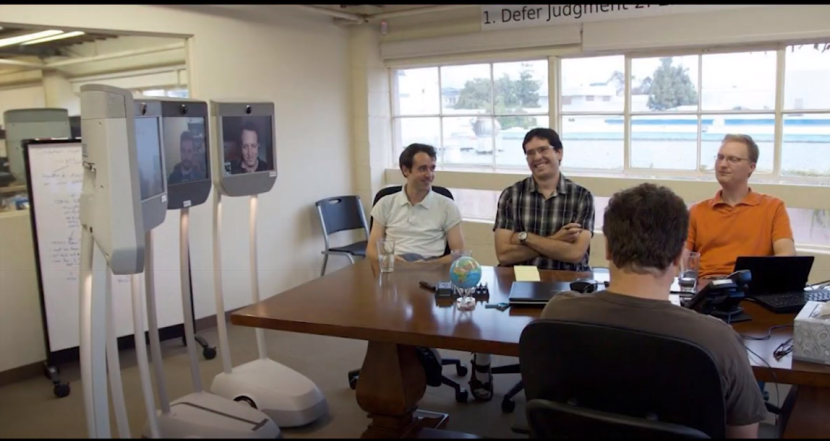
Also referred to as "telecommuting" or even "WFH" (Working From Home) in some industries, remote working has been forced upon thousands of workers worldwide due to the COVID-19 pandemic. There is some level of a silver lining to the grim and tragic start to 2020 - that fact that the climate change has slowed down slightly and that companies have confirmed that many job roles and projects can be carried out effectively with remote teams.
The shift towards remote working has been a long time coming, with the technology having been in place for arguably over a decade. Politics, habits and fixed mindsets have prevented many businesses from allowing even when in some instances it can enhance productivity and be of mutual benefit to the employee and the employer.
Remote working has obvious benefits for the environment. With fewer people commuting to work every day, greenhouse gas emissions are drastically reduced. There is also research to suggest that during the summer months, energy use related to air-conditioning is significantly reduced as well when comparing office-workers with remote workers. A study carried out in 2008 by Sun Microsystems found that:
"Average Employee Saves 2.5 Workweeks Per Year in Commute Time, More than $1,700 in Gas and Wear and Tear on Vehicle, and 5,400 Kilowatt Hours/Year Working Flexibly"
For employers, allowing people to work remotely can allow them to choose from a much larger and potentially more affordable talent pool. For example, in the UK there is a significant shortage of computer programmers and a survey by Prospects found that many vacancies, in general, were hard to fill because of the 'low number of applicants with the required skills'. This causes the salaries for specific skillsets to go up and up in specific areas due to the issues with supply and demand in many areas.
By embracing remote working, employers can open up job opportunities to people across the world - they can potentially employ the best and the brightest, rather than just those who live closeby with a specific skillset. This often means that the experience levels and skills of employers may be higher, whilst salaries could be smaller. In addition when beneficial and where relevant, a company could have people working in different timezones, effectively covering jobs and work around the clock. This works well for example, with any type of customer service vacancies.
It is also a lot easier for companies offering flexible working arrangements, to keep employees. Many employees leave a company because of the commute or because of a general lack of flexible working that can make it difficult to be a parent. For example, schools often start and finish within the standard office working hours, making it virtually impossible for a worker to drop their children off at school, pick them up and be in work during normal hours.
Another huge benefit for employers is related to office space and equipment. Renting office space can prove extremely expensive and is potentially the biggest expense for small to medium-sized businesses. It can also be a big roadblock when it comes to growing a business, whilst trying to mitigate financial risk. With remote working, a business can grow without having to expand office space or relocate. Also, it may be possible to find remote workers who are more likely to accept fixed contracts or work on a 'per project basis' which can again reduce the costs and risks associated with business growth.
Finally, when analyzing remote working from a company's perspective, it is important to note that it is more productive. Employees are not wasting time and energy stuck in traffic for hours, meaning that they are generally happier, calmer, more creative and productive whilst working remotely.
Tips on Making Remote Working Productive:
- Everyone needs a fast internet connection
So you can talk to each other at the same rate as if you were sat next to each other. A headset can also help cancel out much of the background noise.
- Webcams Can be On All of the Time
Many teams now use webcams to stay in touch just like they are in the office. They can share music playlists if they like too. Typically, however, they set up a Google Hangout or similar collaborative workspace and keep the webcams on mute. When they want to ask something they just unmute themselves.
- Virtual Offices for Remote Working
Virtual offices for remote working collaboration are similar to real offices. People have somewhere to sit and an avatar takes the place of their physical body. Rooms can be rented out too for private meetings.
- Virtual TelePresence
Virtual Telepresence allows people to connect to meetings with some level of a physical presence. This can be done with at ablet and a specialised telepresence stand that allows the remote worker(s) to look around the room, nod and shake their 'head'. The next level of Telepresence comes in the form of telepresence robots. The robots can be driven around the office using the remote worker's keyboard.
Finally, for self-employed individuals who areworking from home, a telephone answering service from a company such as Moneypenny or WorkWithMe can help to drastically reduce interruptions whilst focussing on the work at hand. A 24-7 service can also help create a distinction between working hours and working life and family time, as you can make sure that all inquiries go to your answering service receptionist after a set time of the day.








